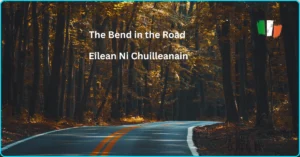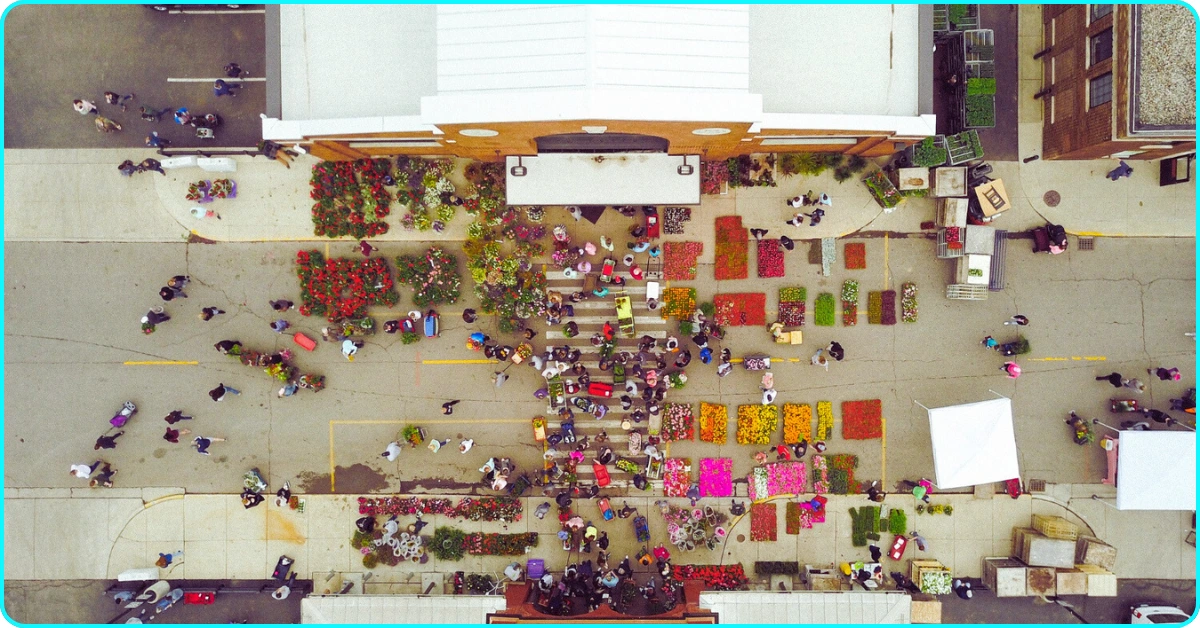I still remember my first taste of traditional Irish food a steaming bowl of Irish stew by a roaring pub fire in County Kerry. The flavors were simple but soulful, like a warm hug after a rainy walk. That meal wasn’t just food; it was a story of the land, the people, and the past, all in one bite.
In this post, we’ll dive into the heart of Irish cuisine, from 19th-century roots shaped by farming and famine to classic Irish dishes like potato pancakes, black and white pudding, and the ever-comforting bacon and cabbage.
If you’ve ever wondered what is traditional Irish food is or why a cup of tea means more than just a drink in Ireland, you’re in the right place. Let’s explore the astonishing truth behind every hearty bite. Have you tried any of these yet?
What Is Traditional Irish Food?
So, what is traditional Irish food, really? At its heart, it’s comfort on a plate simple, filling, and born from the land and its people. It’s the kind of food that doesn’t shout but quietly warms you from the inside out. Think of a big bowl of stew, soda bread still warm from the oven, or mashed potatoes so buttery they feel like a soft blanket on a cold day. That’s the soul of Irish cooking humble, hearty, and made with love.
Traditional Irish food is deeply tied to our history, especially the 19th century, when the Great Famine and a rural, farming lifestyle shaped what ended up on our tables. Because people had to make do with what they had, most meals were built from a few local ingredients potatoes, root vegetables, dairy, pork, and grains. This wasn’t about fancy spices or exotic sauces. It was about survival, creativity, and turning basic ingredients into something deeply nourishing.
You might wonder, what is traditional Irish food called? You’ll often hear it simply referred to as “home cooking” or “Irish fare,” but the dishes themselves carry beautiful names: colcannon, boxty, coddle. Each one tells a story of counties, grandmothers, and centuries past.
So, what are traditional Irish foods? They’re the meals passed down from kitchen to kitchen: Irish stew bubbling with lamb and carrots, soda bread made without yeast, and black pudding served at breakfast. These dishes aren’t just recipes; they’re memories, often cooked with no recipe at all, just instinct and love.
The astonishing truth? Irish food isn’t plain it’s profound. It talks about community, resiliency, and a strong bond with the earth. And once you’ve sat by a fire, breaking soda bread with someone who made it from scratch, you’ll understand: traditional Irish food is less about ingredients and more about belonging.
Epic Slice Alert: Best Pizza in Dublin https://irishlifediaries.com/best-pizza-in-dublin/Now

Most Popular Traditional Irish Dishes
Let’s talk about the good stuff the dishes everyone knows, loves, and remembers. If you’ve ever asked what is the most traditional dish in Ireland?, this is where we dig in.
Irish Stew: The National Dish of Ireland?
Irish stew is often called the national dish of Ireland, made with lamb, potatoes, carrots, and onions.
If I had to choose one meal that tastes like home, it would be Irish stew. It’s warm, simple, and made with love. Tender lamb, soft carrots, onions, and potatoes all slowly cooked together.
I remember having my first real Irish stew in a pub in Galway. The stew was hot and the fire was crackling. It felt like it hugged me from the inside. That’s not just food it’s comfort.
Full Irish Breakfast: A Hearty Start
The full Irish breakfast includes eggs, bacon, sausages, puddings, and toast served hot with tea.
Waking up to a full Irish breakfast is like waking up to joy. Toast, grilled tomatoes, black and white pudding, eggs, sausages, rashers (Irish bacon), baked beans, and a strong cup of tea.
I once had it after a long morning hike in Wicklow. Sitting down to that plate felt like a reward. Every bite was rich and satisfying. This isn’t just breakfast it’s tradition on a plate.
Corned Beef and Cabbage: Irish-American Classic
Corned beef and cabbage is a traditional Irish-American dish, often eaten on St. Patrick’s Day.
Funny enough, most Irish people didn’t grow up eating corned beef and cabbage. It became popular in America among Irish immigrants who adapted to new ingredients.
Still, it has earned a place in the story of Irish food. I’ve had it during a St. Patrick’s Day feast is, to be honest, rich, salty, and excellent in its own right.
Boxty: Ireland’s Potato Pancake
Grated and mashed potatoes are used to make boxty, a classic Irish potato pancake.
Boxty is a little treasure. It’s a potato pancake, crisp on the outside and soft on the inside. Like the Irish cousin of a hash brown.
I had my first boxty in Donegal. It came with a creamy mushroom sauce and I was hooked. It’s the kind of dish that makes you feel like someone’s grandma cooked it just for you.
Bacon and Cabbage: A True Irish Classic
Bacon and cabbage is a classic Irish dish made with boiled bacon, cabbage, and mashed potatoes.
Ask any Irish person what reminds them of Sunday dinner, and they might say bacon and cabbage. It’s boiled bacon (more like ham), cabbage, and creamy mashed potatoes.
It’s simple, sure. But when done right, it’s full of flavor. I grew up eating this at family dinners it always brings back warm memories and second helpings.
What Is the Most Common Food in Ireland?
Potatoes are the most common food in Ireland, used in meals like mash, stew, and boxty.
If you’re wondering what is the most common food in Ireland?, the answer is easy: potatoes. They’re everywhere on breakfast plates, in stews, fried into chips, mashed, or baked.
They’re not just food they’re part of our past. And somehow, they never get boring.

The Core of Irish Cuisine: Staple Ingredients
Let’s talk about the real heart of Irish cooking the ingredients. If you’ve ever asked yourself, what is traditional Irish food made of?, the answer is beautifully simple. It’s built on humble, honest staples that have stood the test of time. These are the everyday heroes of Irish kitchens, the kind of food you grow up with, crave on rainy days, and pass on through generations.
Potatoes: More Than Just a Side
Traditional Irish food often revolves around potatoes, used in dishes like boxty, mashed potatoes, and potato bread.
Ah, the potato. No other ingredient carries as much history or heart as this one. During the 19th century, potatoes were more than food they were survival. After the Great Famine, the potato became a symbol of both hardship and strength.
But beyond the history, potatoes show up in the most comforting ways. From creamy mashed potatoes (best with a big spoonful of butter) to crispy boxty (Ireland’s answer to the pancake), they’re always there, quietly stealing the show. One of my favorite things? Potato bread toasted with butter, especially on a chilly morning. It’s like a warm hug.
Meats: Hearty, Honest, and Full of Flavor
Traditional Irish foods include meats like pork, bacon, black pudding, and white pudding, often featured in iconic meals like bacon and cabbage.
When it comes to meat, Irish cooking keeps it simple but satisfying. Bacon and cabbage is a classic nothing fancy, just good ingredients cooked with care. Pork has always been big here, whether it’s rashers in a fry or sausages sizzling in a pan.
And then there’s black and white pudding. If you’re not used to it, it might sound unusual, but once you’ve tasted a proper Irish breakfast with both puddings, you’ll understand. It’s rich, earthy, and surprisingly comforting. These meats aren’t just about taste they tell a story of farming families and traditional butchery, passed down through time.
Dairy and Breads: The Soul of Irish Simplicity
Staples of traditional Irish cuisine include soda bread, rich Irish butter, and locally made cheeses.
You haven’t truly lived until you’ve had fresh Irish soda bread slathered in creamy, golden butter. Honestly, the bread alone could make you fall in love with Irish food. Made with just a few ingredients flour, baking soda, and buttermilk it’s rustic, fast, and oh-so-satisfying.
Ireland’s dairy is another star. Our cows graze on lush green fields, and you can taste that freshness in every bite of cheese or spread of butter. I remember visiting a local farm where they served fresh cheese and warm bread straight from the oven. It wasn’t a fancy meal, but it felt perfect.
Beverages: The Quiet Companions
A cup of tea and a glass of Irish whiskey are traditional beverages that reflect the heart of Irish hospitality.
Finally, no talk of Irish food is complete without the drinks. Here, a cup of tea is more than just a beverage it’s a custom. It marks welcomes, goodbyes, bad news, and great chats. I’ve lost count of how many deep conversations I’ve had over a hot cuppa.
And of course, there’s Irish whiskey. Smooth, strong, and rooted in centuries of tradition, it pairs well with both stories and songs. Whether shared around a pub table or sipped slowly at home, it’s part of our food culture too.

Traditional Irish Snacks and Sweets
Let’s talk about the treats, the ones you’d find at a granny’s table, in a cozy café, or tucked in a lunchbox on a school day. Traditional Irish snacks and sweets might not be flashy, but they’re full of charm, comfort, and a whole lot of heart.
Soda farls are a must. Instead of being baked, these circular, flat bread slices are produced on a griddle. Lightly crisp on the outside and fluffy inside, they’re perfect with butter and jam or dipped into a mug of tea on a rainy afternoon.
Soda farls are traditional Irish griddle breads, commonly enjoyed with butter, jam, or tea.
Then there are fruit scones, a beloved staple of Irish teatime. They’re not too sweet, often packed with raisins or currants, and best served warm with a dollop of jam and a spoon of clotted cream. I remember visiting a farmhouse in Galway where the scones were still steaming, fresh from the oven. With the scent of tea and turf smoke in the air, that simple snack felt like a slice of heaven.
Spice buns or barmbrack now these are rich with tradition. Made with dried fruit and hints of cinnamon and nutmeg, they show up most around Halloween. Families often bake a ring, a coin, or a cloth inside as part of a fortune-telling game. I used to wait eagerly to see what I’d get One year I found the coin, and for a moment, it felt like pure magic.
Spice buns and barmbrack are seasonal Irish fruit breads often enjoyed at Halloween, sometimes baked with hidden charms.
Of course, every family has its own secret recipes for seasonal sweets. Some bake treacle bread at Christmas, while others pass down buttery shortbread recipes from great-grandmothers. These aren’t just snacks they’re family stories, told in flour and sugar.
And a cup of tea is always nearby, regardless of the season. It’s more than a drink it’s the silent partner to every treat, a quiet moment of calm, and a big part of Irish food culture.
Traditional Irish snacks and sweets include soda farls, fruit scones, spice buns, and are often paired with tea and family traditions.

Evolution: Modern Irish Food vs. Traditional Dishes
Irish food today is like an old folk song played on a modern guitar familiar, comforting, but with a new rhythm. It still holds the warmth and honesty of the past, but now it dances with creativity, color, and a little global flair. If you’ve walked into a gastropub in Dublin lately, you’ll know exactly what I mean.
What’s fascinating is that modern Irish recipes haven’t abandoned tradition they’ve built on it. That same soda bread your granny made? You’ll now find it served with wild garlic butter or local smoked salmon. Colcannon might appear with kale and truffle oil on a tasting menu. It’s not about reinventing the wheel. It’s about polishing the hubcaps and giving it a scenic spin.
One of my favorite meals in recent years was in a small restaurant in West Cork. They served beef and Guinness pie but with slow-cooked short rib, puff pastry like clouds, and a side of root veg purée. It tasted like Sunday dinner and fine dining had a baby. That’s the new Irish food: still hearty, still humble, but dressed up for the occasion.
This shift didn’t happen overnight. It came from a mix of things farmers’ markets, young chefs trained abroad, and a national pride in quality produce. Ireland’s food scene began to glow from within, drawing inspiration from the land and the world at once.
Farm-to-table is a way of life now, not simply a fad. Local cheeses, fresh oysters, foraged herbs all proudly Irish, all creatively reimagined. And gastropubs? They’re where Guinness meets goat cheese croquettes, where you’ll sip whiskey beside a plate of venison stew with blackberry jus. It sounds fancy, but it still feels like home.
If you look at Irish menus now, they reflect this balance. You’ll spot boxty with chorizo, seaweed-infused breads, or apple tart made with brown butter and sea salt. The past is always there but now it’s paired with a bold wink toward the future.
And honestly? That’s what makes it so exciting. Irish food has found its voice. It’s not just feeding the belly anymore it’s feeding curiosity, creativity, and connection.

Irish Food Culture and Dining Experience
In Ireland, food isn’t just about eating it’s about coming together. Meals have always been social and often sacred moments. Whether it’s a simple Sunday roast or a birthday tea with way too much cake, the table is where stories are shared, jokes fly, and everyone feels like they belong. I’ve sat at countless Irish kitchen tables where someone always insists you “take another spud” even when you’re stuffed. That’s love, Irish style.
We don’t do rushed meals well. Food is meant to be savoured, especially when it’s shared. In many homes, dinner is still the time when everyone gathers no phones, no telly, just plates clinking and voices rising. And if someone says, “Will you stay for a bite?” you’re not just invited, you’re welcomed in like family.
And then there’s the tea. Oh, the tea. In Ireland, a cup of tea is more than a drink it’s a gesture. It says “You’re safe here,” or “Let’s talk,” or “You need a break.” I can’t count the number of times I’ve sat down for “a quick cuppa” that turned into hours of laughter or heart-to-hearts. Tea is there for births, deaths, and everything in between. No matter what’s going on, the kettle goes on.
Our connection to food runs deep because it ties us to the land and to each other. You’ll hear people say “This is how my nan made it” or “We always had this at Christmas.” Recipes aren’t just handed down they’re handed over like heirlooms, with pride and a bit of a story attached. Food isn’t just nourishment here it’s memory.
If you’ve ever wondered what a traditional Irish food menu looks like, it’s wonderfully down-to-earth. A little seafood chowder or a bowl of soup with brown bread could be served as an appetizer. The main course often involves meat and potatoes (naturally) maybe a stew, roast beef, or bacon and cabbage. And for dessert? Apple tart with cream, maybe a spot of trifle, or something simple like rhubarb crumble. Tea comes last, of course. Always.
The beauty of Irish dining is that it doesn’t try to impress it just wants you to feel at home. And trust me, after a few bites and a good chat, you will.
Conclusion
If you’re someone who values hearty, comforting meals rooted in culture and storytelling, traditional Irish food might just feel like a warm hug from the past. But if you lean toward spicy or exotic flavors, you might find Irish cuisine a bit too subtle. In my experience, though, its magic lies in its simplicity—the kind of food that brings people together around a table.
Traditional Irish food is more than just what’s on the plate. It’s memories, family, and the quiet strength of a country that’s weathered many storms. Whether it’s the smoky richness of a full Irish breakfast or the soul-soothing goodness of Irish stew, these dishes carry generations of love.
Have you ever tried a full Irish breakfast or Irish stew? Let me know in the comments!
What is traditional Irish food?
Traditional Irish food is all about hearty, home-cooked meals. Think stews, boiled potatoes, soda bread, and dishes that warm you up on a cold day. It’s simple, filling, and made with local ingredients. Learn more about the roots of Irish comfort food in our full guide.
What is the most common food in Ireland?
The most common food in Ireland is probably the humble potato. It’s in everything—soups, stews, and even bread. You’ll also find people love things like brown bread, bacon and cabbage, and a good cup of tea. Want to see what’s on most Irish dinner tables? Keep reading!
What is traditional Irish food menu?
A typical traditional Irish food menu might include Irish stew, colcannon (mashed potatoes with cabbage), soda bread, and apple tart for dessert. And don’t forget a warm bowl of coddle or a full Irish breakfast. Check out our sample menu to plan your next Irish-style meal!
What is traditional Irish food called?
There’s no one name for traditional Irish food, but locals often refer to it as “home cooking” or just “Irish fare.” You’ll hear names like “boxty,” “champ,” and “barmbrack” too—they’re all part of the Irish food family. Dive into the delicious meanings behind these names!
What is the national dish of Ireland?
Irish stew is often called the national dish of Ireland. Made with lamb or beef, potatoes, and root veggies, it’s been a favourite for generations. Want to try an authentic recipe? We’ve got you covered.
What is the most traditional dish in Ireland?
The most traditional Irish dish is probably Irish stew. It’s been around for centuries and uses ingredients found in nearly every Irish kitchen. But dishes like boxty and soda bread are just as deeply rooted. Explore how these classics came to be.
What are traditional Irish snacks?
Traditional Irish snacks include soda farls, Tayto crisps, buttered scones, and even a slice of barmbrack (fruit loaf). They’re simple, tasty, and often enjoyed with tea. Want to snack like the Irish? We’ve got a whole list for you.
Which meal is known as the full Irish?
The “full Irish” is a hearty breakfast that includes bacon, sausage, black and white pudding, eggs, baked beans, grilled tomatoes, mushrooms, and toast. It’s the Irish way to start the day strong! Curious what makes it different from the English version? Read on to compare.










